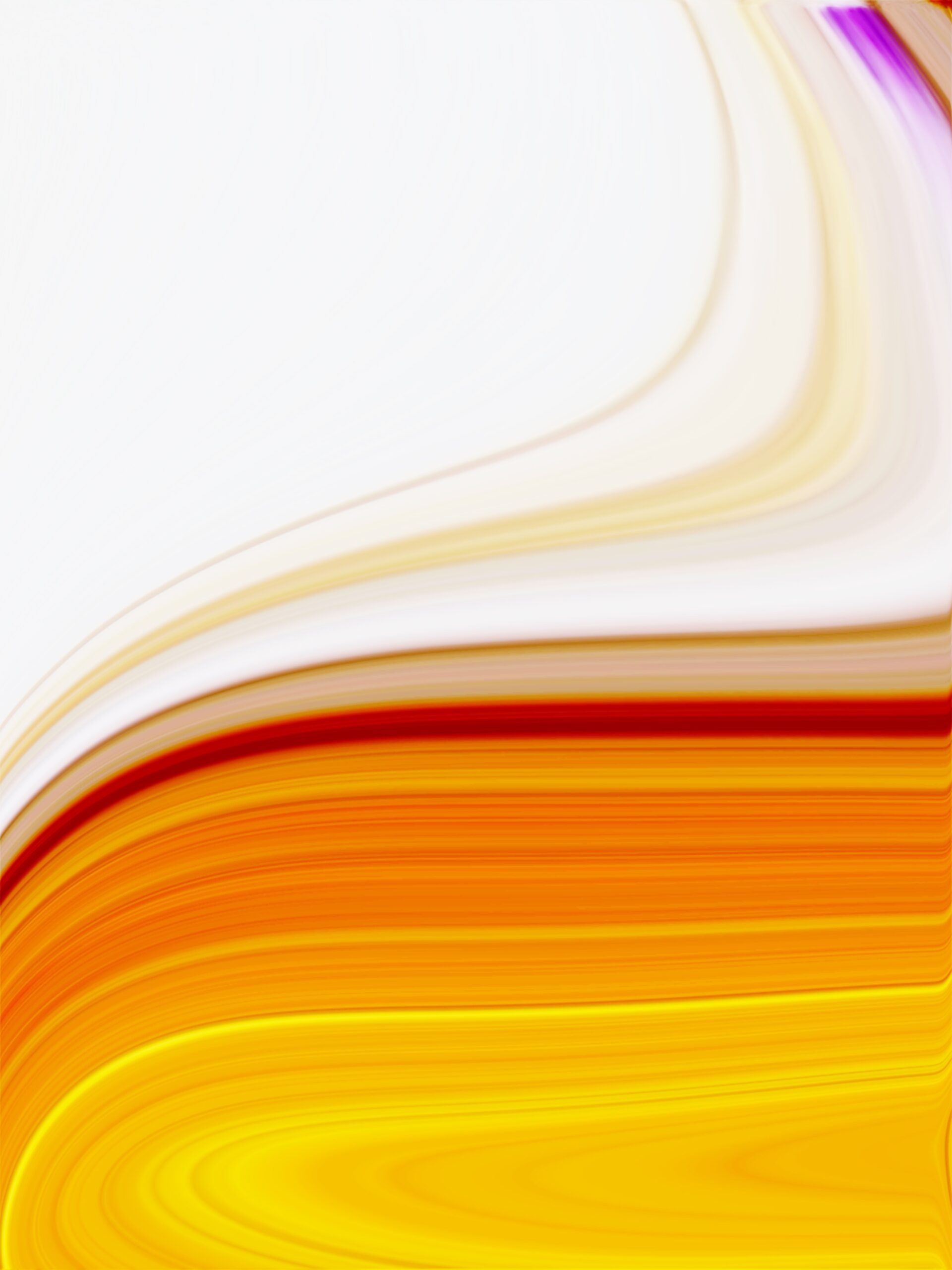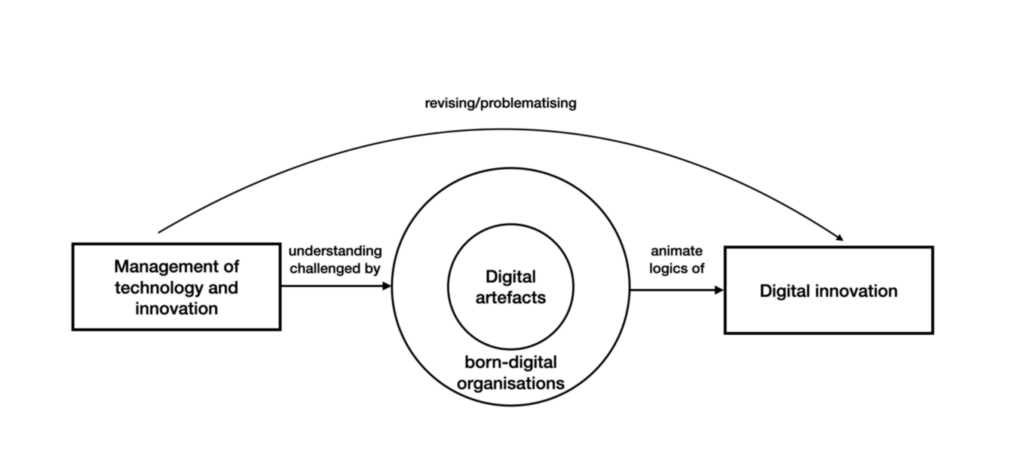
The missing technological middle range
Information Systems research doesn’t do so well on developing native theories because:
1. our writing about technology is either too narrowly framed (specific technologies) or
2. because most general reflections on technology are grand theories.
Theories of middle range are usually imported, used as tools, and do not organise discourse.
We miss a technological middle range.
Situation: Phenomenon-driven discourse
One of the promises of studying open source communities has been that open source communities give us a glimpse into workplaces of the future. Developers use GitHub to create innovative products while being disepersed all over the world and without traditional centralized decision making structure. If we understand what works for open source development, we should be able to foresee effective ways of organizing for the remote workplace of the (post-)covid era. Have we used insights from open source to inform how we think about remote workplaces? I dont think we have. Asking why leads to valuable reflections on how research gets done.
The topics that we publish on in Information Systems journals usually closely track what IT professionals worry about. Today, it is Digital transformation programs, because companies talk about them and try to execute them. We talk about Artificial intelligence, as a class of technology that is finding its ways into organizations nowadays. We apply theories to make sense of the technological novelties of the day. A discourse organized around technologies gives us relevance. Courses about digital transformation or AI are in demand. But, do we develop understanding that goes above the individual technology-centered debates in a useful way? I have doubts.
It is not unusual that social sciences are producing insights that are only “true” for the given moment in history. If we discuss technologies, this is maybe more true than if we discuss organizations or political regimes. I am also not so naive as to expect a commulative discourse. Of course topics leave the discussion and new topics pop in. But some practices can help to avoid that we reinvent the wheel with each shiny new gadget. Moreover, some insights should carry across instances. Like the example of open source informing distributed leadership and the “future of work” research.
I propose to split the diagnosis of the situation in two parts. There is a problem of narrative and a problem of the nature of the intellectual products available. First, our narratives are dominantly technology-driven. We talk about health platforms, or disinformation on Twitter or digital transformation. We are more likely to review a literature on e.g. blockchain than to review a discourse about distributed organizing. The tech-centered narrative then gets in a way of theorizing on a level of generality independent of technology. A lot of our intellectual products are then bifurcated between facts and models specific to technologies on one side and grand theories on the other side. What would be in the middle of those two would be middle range theories.
Problem: Learning across phenomena
There is no lack in technology-independent theory. Such theory is however often imported or rather grand. Let’s set aside the problem with importing theory for another day. Suffice to say, imported theories rarely form basis of our research identities and we apply them to problems rather than meaningfully contributing to them. When it comes to grand theories, I mean that in the technical sense of grand theories that provide an universal position. Publications proposing to see technologies as patterns or processes are such general reflections. The usage of affordances provided an grand theory. The whole sociomaterial debate has been as grand as they come. They give us ontology or meta-language to conceptualise what happens but they rarely yield specific insight.
Theories of the middle-range, in contrast to grand theories, are theories that focus on limited conceptual ranges. The reference to the term goes to Merton and it is probably better to just let the sociologist do the talking:
Our major task today is to develop special theories applicable to limited conceptual ranges – theories, for example, of deviant behavior, the unanticipated consequences of purposive action, social perception, reference groups, social control, the interdependence of social institutions – rather than to seek the total conceptual structure that is adequate to derive these and other theories of the middle range.
Robert K. Merton, Social Theory and Social Structure (Glencoe, IL: Free Press, 1968, ISBN 0029211301).
The examples Merton gives indicate his focus on decontextualised social dynamics. He calls for calls for theories of deviant behaviour, not of excessive drinking. He calls for unanticipated consequences of purposive action and not to theorize “consequences of birth control on age composition and size of siblings with profound consequences of psychological and social character” (this is example given on page 902 in Merton’s actual study of unanticipated consequences.). Middle range theories, to Merton, provide an account of a particular dynamic in the social world, which can be observed across multiple instances. How would this work for technology? My attempt at formulating the problem is this: Can we propose and productively develop middle-range theories of technology use, without tightly linking them to overly particular classes of technology?
Many mid-range theories are available. Technology acceptance models are a mid-range theories. Goal contagion is a mid-range theory as an example and the list of IS theories is full of them. But do we use them as more than sense-making devices for studies? Do we contribute to them meaningfully? What would it look like if we did?
Solutions: Detachment and attachment
This is the moment in the essay where I did my work at outlining the problem. The more difficult part is left. That is to propose a path forward. I find it useful to think about two processes: detachment (from data to theory). And attachment (applying theories to data). You may be thinking that this is just induction and deduction. Kind of. I have reasons for not using those terms. The main reason is that they imply quite formal and abstract processes of formal logic. In contrast with formal logic and epistemology, I am more concerned with how research is done. A fancy words would be that I want to focus on communicative practices.
Achieving detachment
How do we develop theory? The corresponding logical operation is induction but this is not an epistemological problem but a problem of social construction. The challenge is to frame the learning from the study as more general than fitting to a particular technology. For example, so not write studies about blockchain but inter-organisational coordination.
A second strategy would be review articles that aggregate learning for a specific socio-technical dynamic across different technology types like the examples in the tweet above. What can we learn from decision support systems that applies to artificial intelligence? Review articles like this would allow to detach lessons from particular technologies that were discussed at particular time and allow for transfer by application or comparison.
Achieving attachment
Assuming a mid-range theory exists, how to we use it? The corresponding logical operation is deduction but the practical problem doesn’t lie in formal logic. The problem is to draw on middle range theories or previous instances of technological phenomena that could well inform whatever topic we deal with at the moment. We can frame articles as cases of specific socio-technical dynamics or we can be more creative in how we approach front-ends of our papers. Imagine reading a paper about working from home that takes us through papers on distributed development, to continue with that example as a context we can learn from. The idea is to attach a current phenomenon to a more general (but not grand) theory or draw thoughtful analogies.
The processes of attachment and detachment merge when we realise that a good empirical paper should probably be framed with a mid range theory but also advance it. If it doesn’t advance a theory, it only applies it. Its novelty then likely lies in the area of application, which takes us back to the problem of phenomenon-centered discourse.
We write about technologies, which makes our research timely. However, do we learn across instances of technologies in sufficient degree? I believe that re-focusing on middle-range theorizing is a way to help us be more commutative and to transfer insights from one class of technology to the next.
To do so, it would help if we stopped using middle-range theories as a mere sense-making device that helps us organise empirical material. That is a legitimate pragmatic purpose. Besides that, we should theorize on the middle-range in a way that considers types of socio-technical dynamics. But most of all, if we start organizing our research around types of specific socio-technical dynamics, we could transfer our findings across time and place.
That’s it. This was fun to write.
Note: My aim with this text is to put in words something I have felt for a while.
These are ideas in progress (aka a blog) with the aim to share and maybe more stimulation to move this thinking forward. This is not a paper. Don’t be a reviewer but responses are welcome.

















